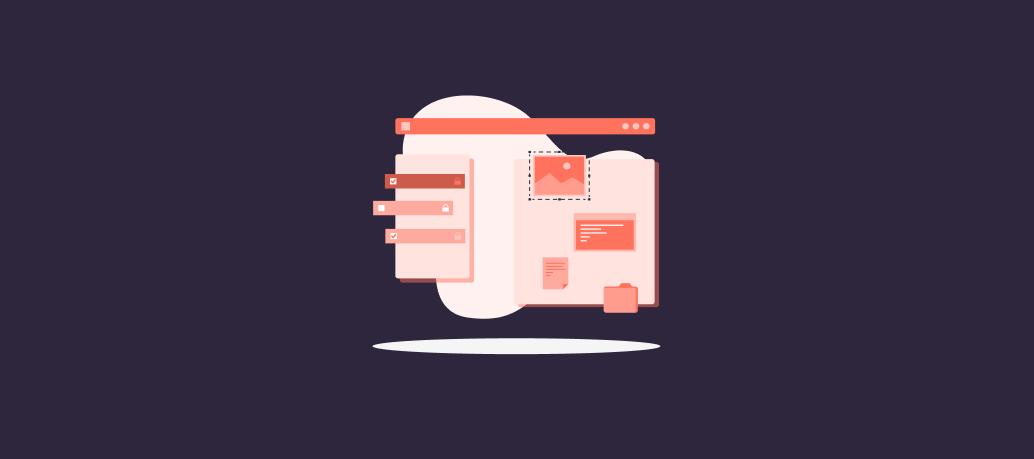If you’re ever curious as to why certain CSS frameworks are so popular – it is largely due to the fact that frameworks simplify the process of creating a layout structure. This concept further extends into libraries and UI kits also, particularly for popular frameworks like Tailwind CSS.
Learning how to structure a page layout with CSS isn’t that bad. Both Grid and Flexbox are relatively easy to grasp once you practice using them on actual real-world projects. That said, having access to intuitive layout generators is a godsend. Not only can you simplify creating a complex layout structure, but you’re also going to save quite a bit of development time.
Layout Generators for Grid & Flexbox
Rather than making two separate articles for the same topic, I’m going to combine both Grid & Flexbox generators into a single post. In fact, quite a few of the resources in this list provide the option to generate layouts for one or the other. And, at the very end, I’m also going to include a few “standalone” resources. They won’t necessarily be generators, but pre-determined layouts that you can copy & paste into an existing or a new project that you’re working on.
I’ve added a link to each resource’s website, and also the GitHub page. In some cases, the project doesn’t have its source code published, so I’ve added a link to the authors’ page instead.
CSS Layout Generator
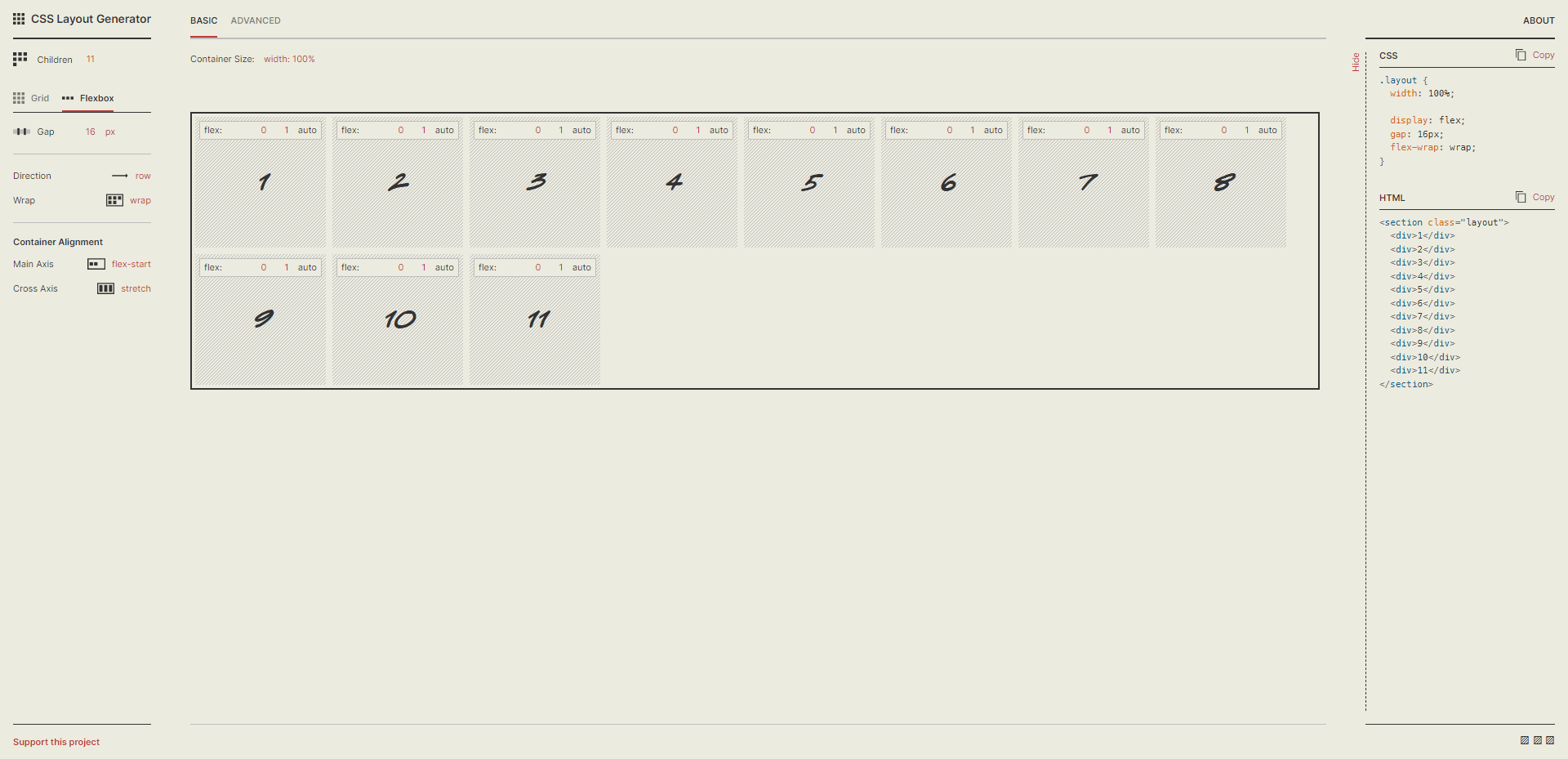
This layout generator by Brad Woods is easily one of the most popular choices for CSS developers as it offers options for both Grid and Flexbox. On the landing page, you’ll be able to select pre-made templates for each system, and then use the provided tools to further customize your selected layout. It takes a while to learn, but definitely worthwhile.
Once you select a template, you get access to a visual editor in which you can change things like row and column count. You can also apply specific gaps between each row/column, and further improve the style by adding custom margins. As you do – the code snippets on the right-hand sidebar will change in real-time. And once you’re done, you can copy the code over.
CSS Grid Layout Generator
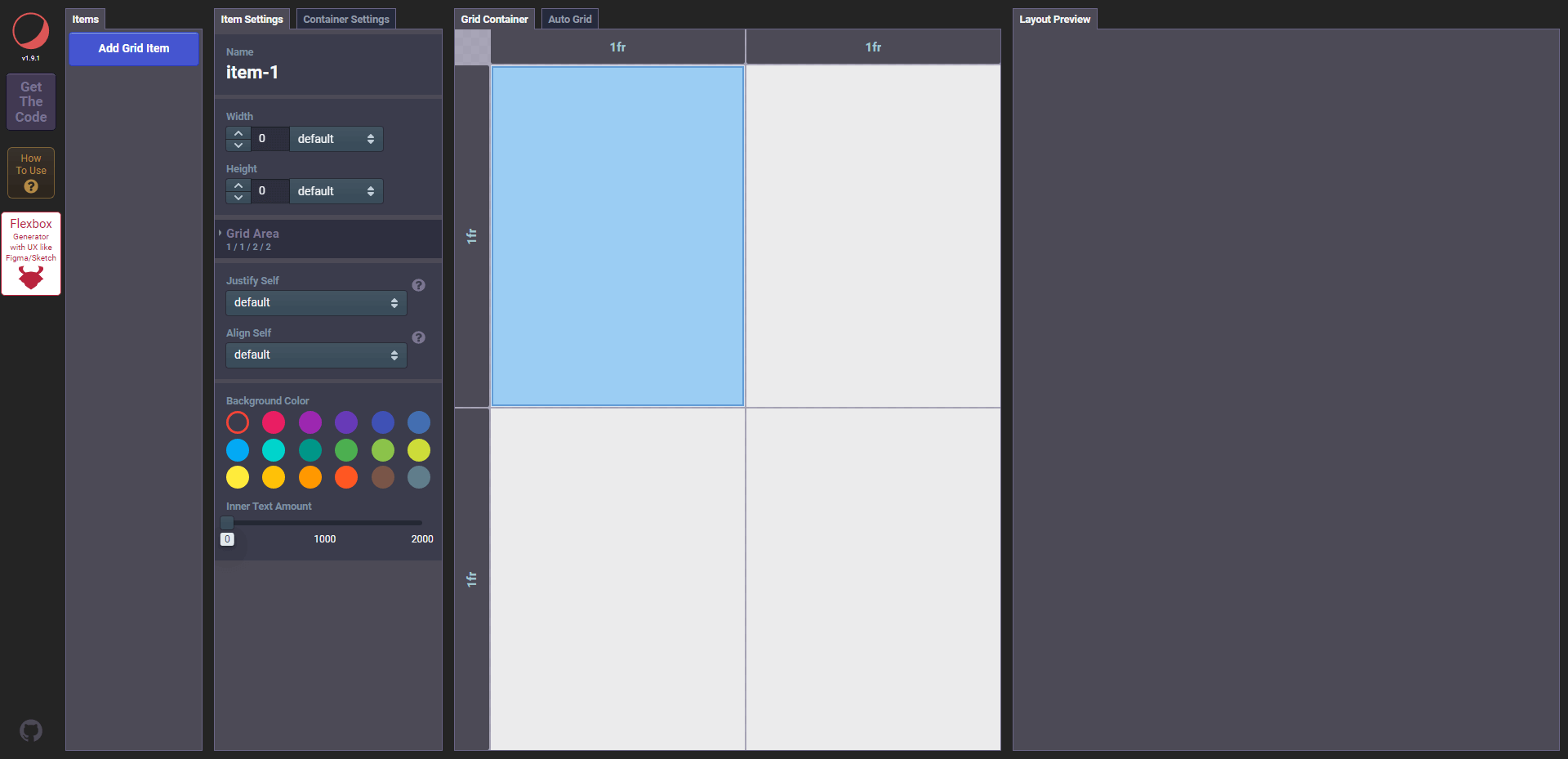
I’ll admit that at first glance this tool can feel a little intimidating, which I assume is the reason why the author made a video tutorial for it. But it’s well worth mastering this tool because it provides immensely powerful features for creating layered layouts.
Outside of being able to add new Grid items, you can customize each item’s settings, including global Container options for the foundation of the layout. Additionally, it’s possible to overlay items and create layouts that replicate 3D effects.
Layoutit Grid
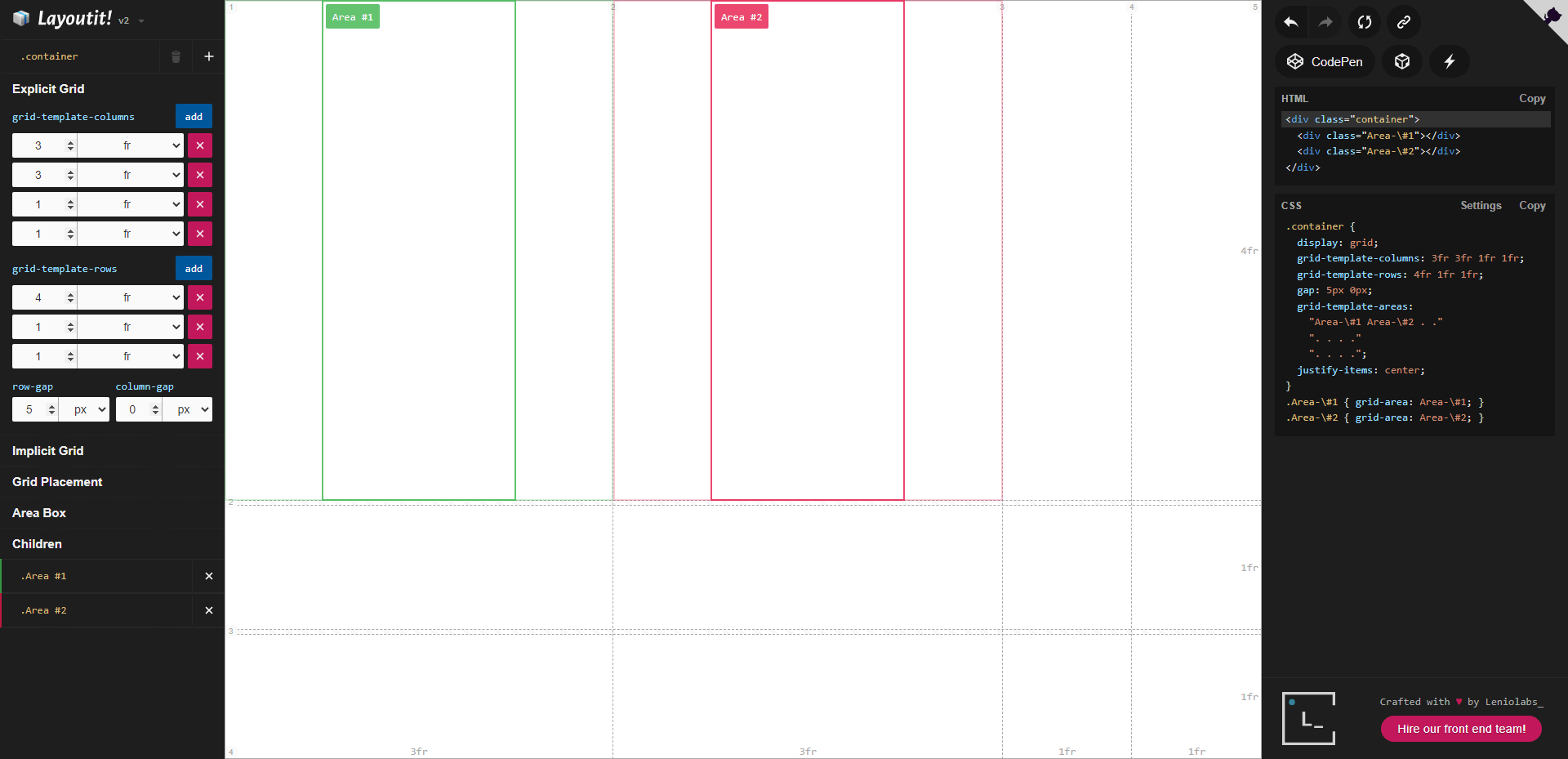
There are a number of reasons why I love the Layoutit generator. First, you have a lot of freedom in quickly adding grid-template-columns and grid-template-rows. And each of those columns and rows can be modified using your preferred unit measurements.
By clicking on each item in the layout preview, you can assign Area Names – letting you structure your layout based on the content that’s going to go inside it. And last but not least, you can directly export your layouts to CodePen or CodeSandbox with a single click.
CSS Flex Container
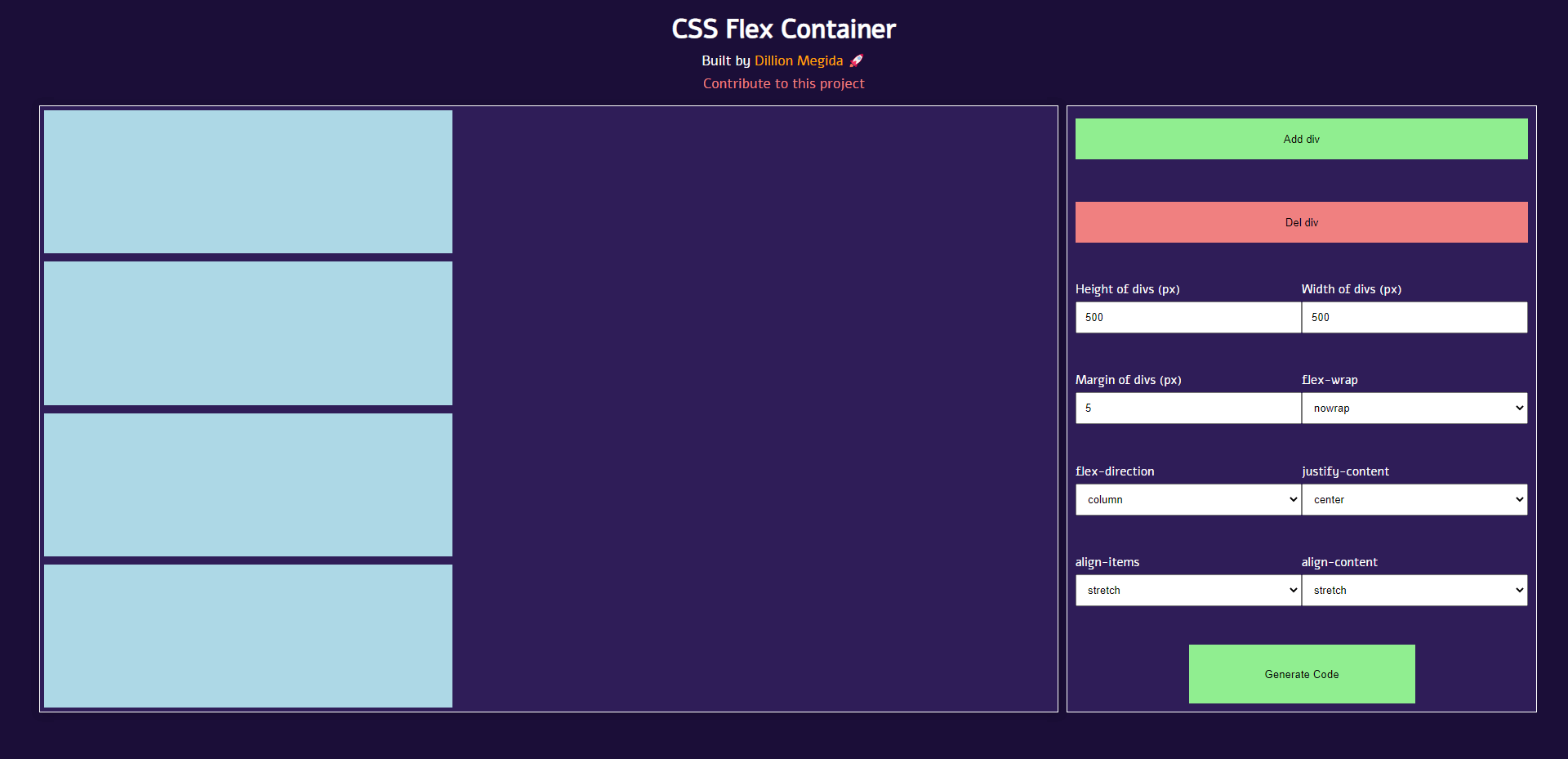
This easy and intuitive Flexbox generator from Dillion Megida is definitely worth bookmarking even if you don’t work with Flex layouts so often. It works by letting you add or remove new div elements, and then you can specify custom height/width for them also. The only thing you’ll have to do manually is adjust the height/width for individual div elements.
It doesn’t look like the tool is able to do so as it sets specified dimensions for the divs all at once.
Furthermore, you can apply global values to justify-content and flex-direction. If you click the Generate Code button – Dillion has pre-made an entire HTML template so that you can start working with the layout right away. I thought that was a nice touch.
Griddy
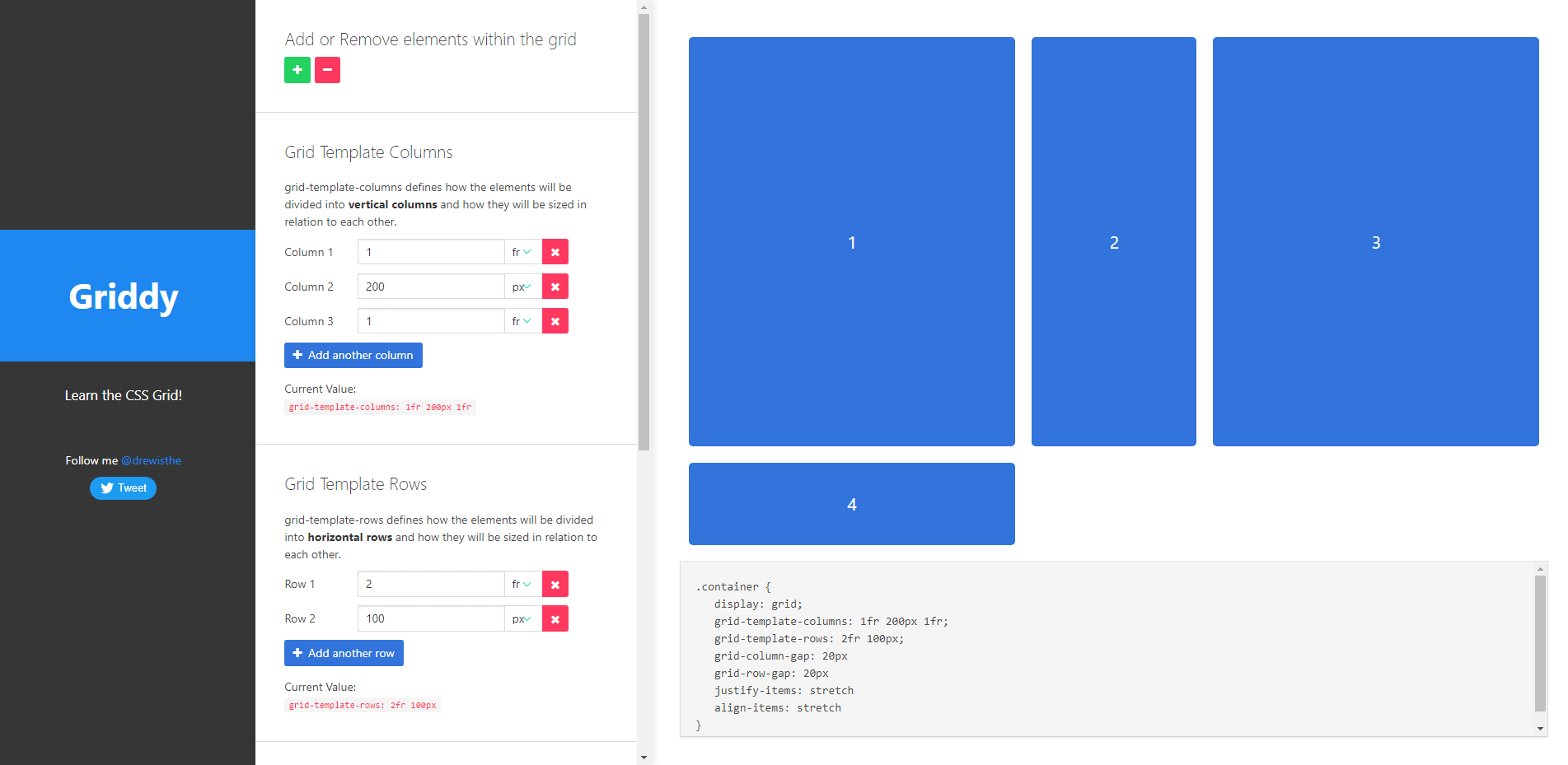
I think if you’re inexperienced working with Grid – the Griddy tool will get you up to speed very quickly. The clean UI combined with easy-to-understand features provides a visually pleasing experience for learning. You can add rows, remove them, or columnize your layout and then specify custom units to see how it changes in real-time.
Additional features include the ability to change gaps between rows and columns, but also to justify items and align them with stretch, center, start and end properties.
CSS Grid Generator
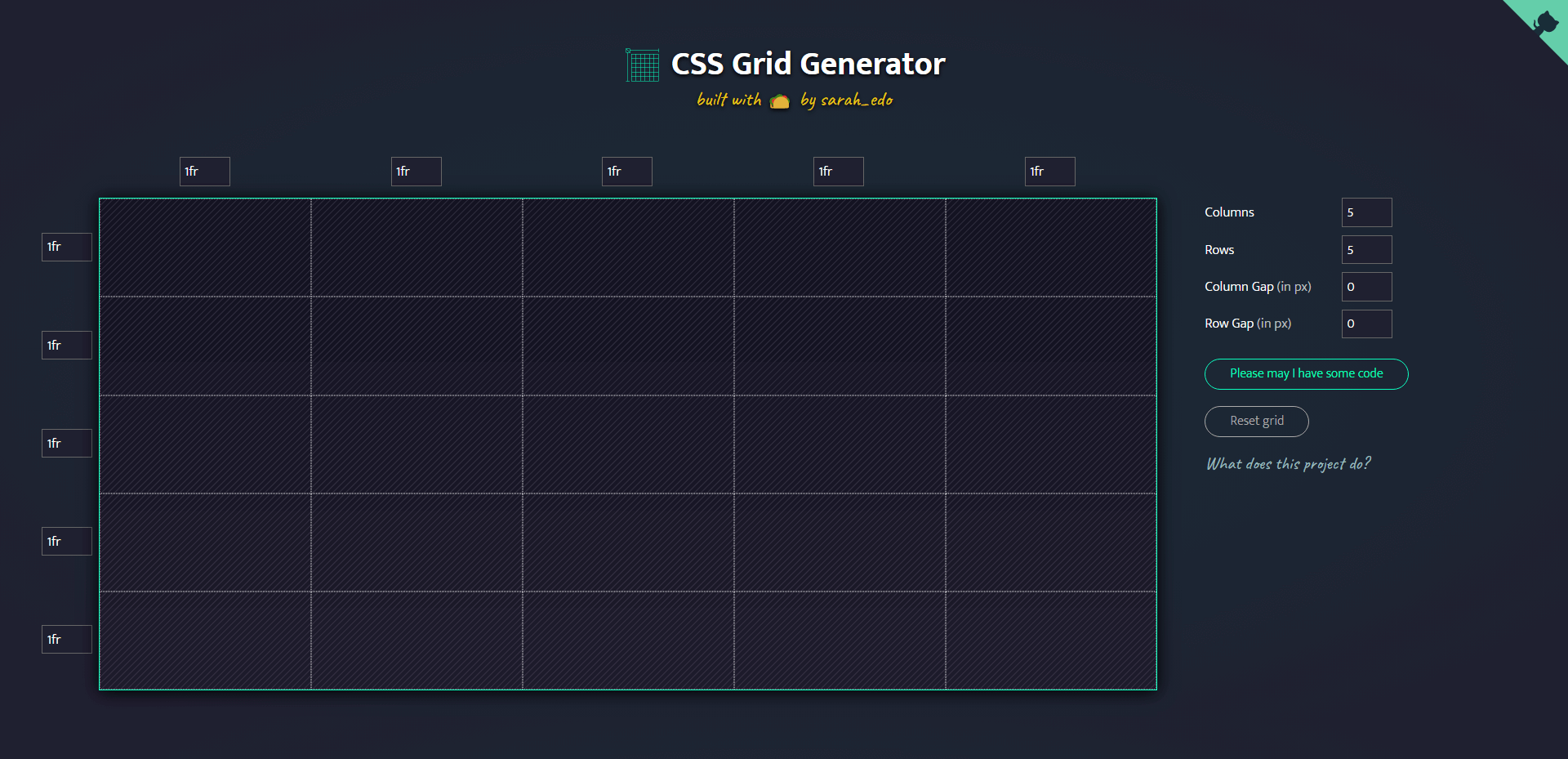
I think it’s fair to say that Sarah Drasner is a household name in the web developer community.
And as a means of giving back – she put together the CSS Grid Generator tool. It’s arguably one of the most popular tools for its purpose. The way it works is relatively straightforward. You have the option to specify rows and columns, and then assign individual unit numbers to them.
In her own words, Sarah says it isn’t a complete tool, but certainly plenty enough to give junior developers a better understanding of the intricate values that are specified within Grid layouts.
Flexy Boxes
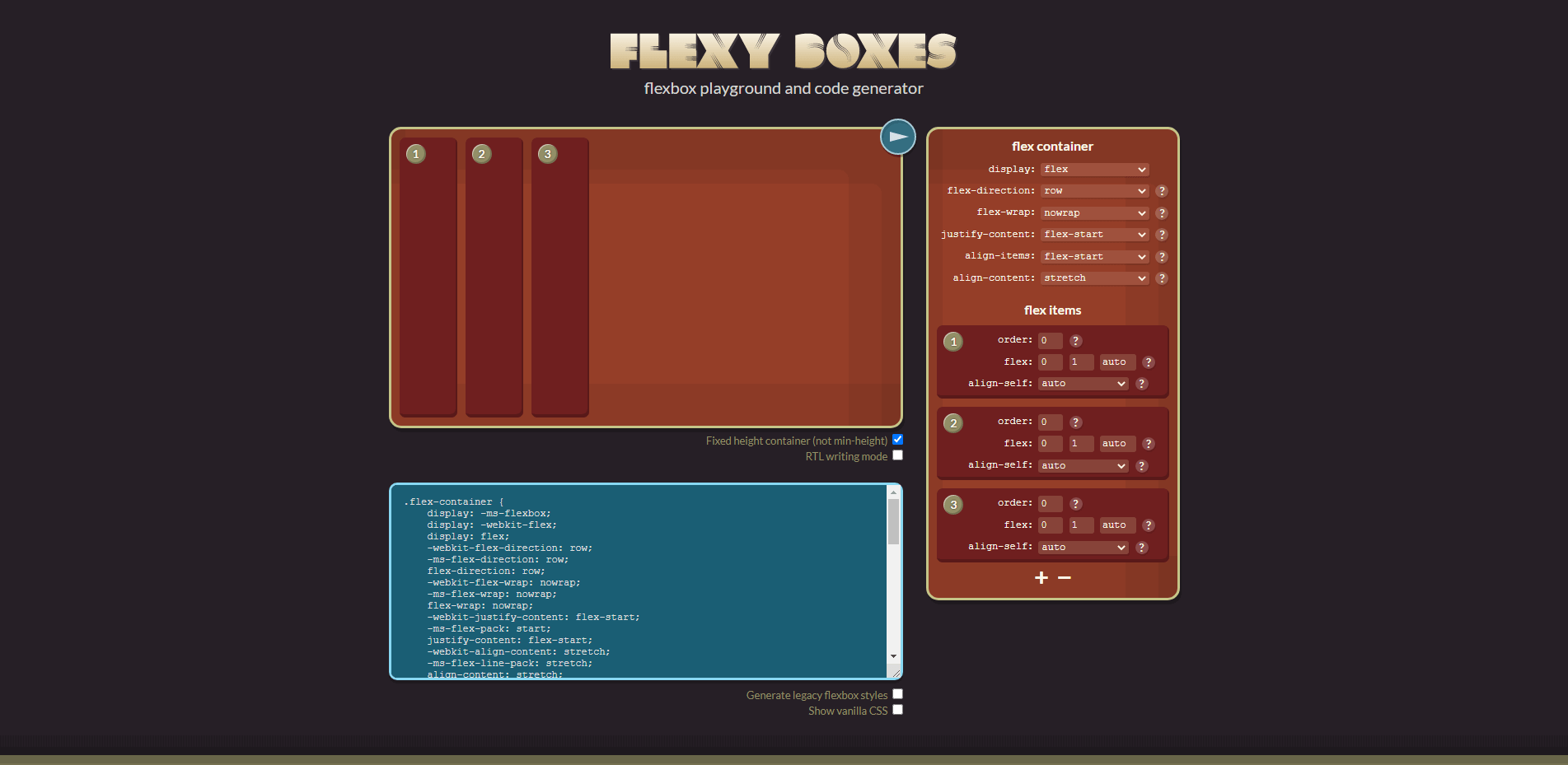
My favorite feature of Flexy Boxes is the ability to apply custom settings to each div individually.
It works as you’d expect. You can add/remove div elements, and then structure them in a way that results in a unique layout. You get all the familiar tools for managing the overall container settings, too. That includes the ability to change flex-direction, or specify a custom align-items value. And once you’re done – the code snippet is ready for exporting.
Flexbox Playground
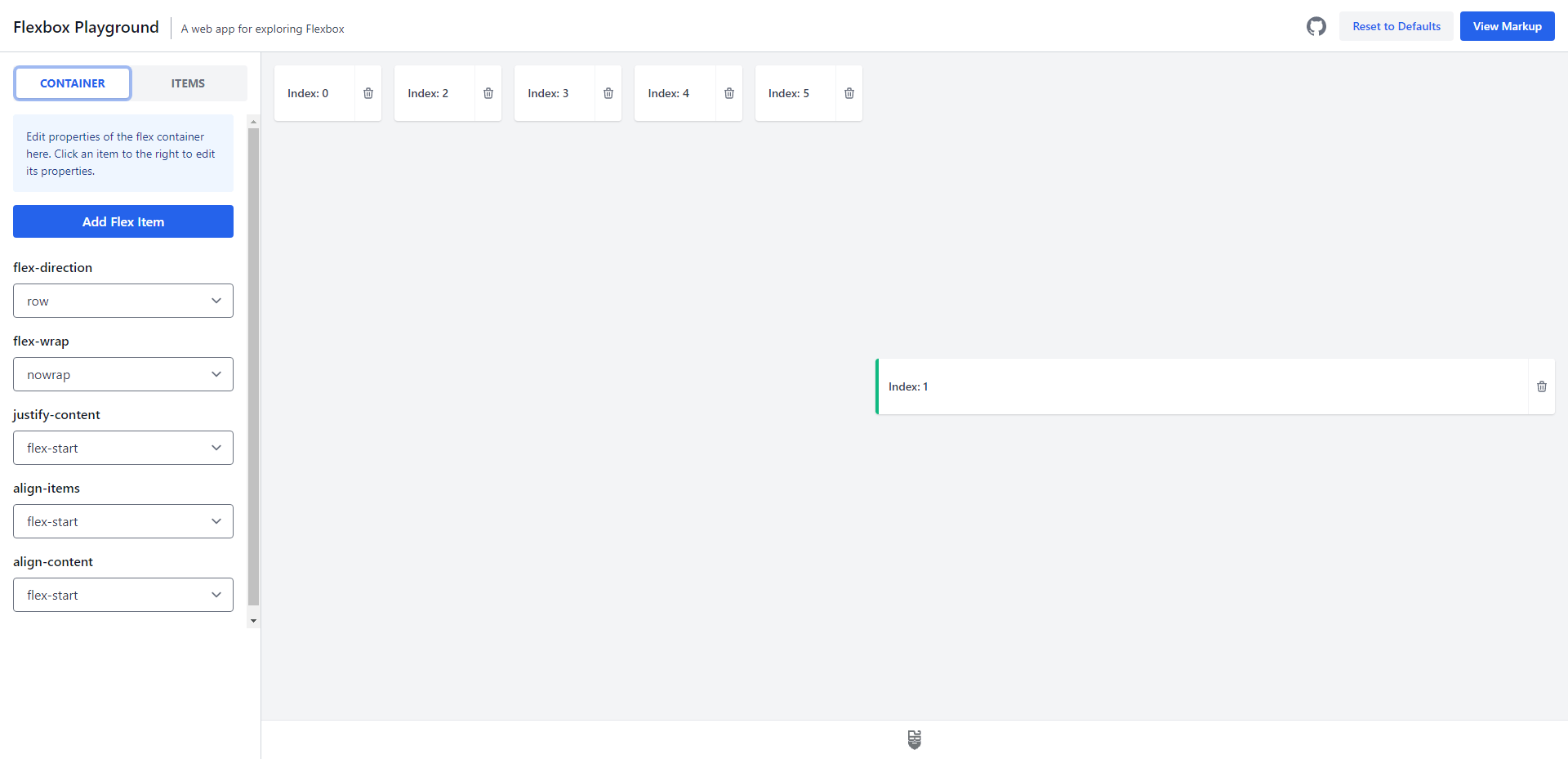
If you want to learn Flexbox, this is a resource for you. I mean, you can export the final layout if you like, but more than a generator this is built as a learning tool. The goal is to give you a clear idea of what happens when items are added to a Flex layout foundation. And, also, to showcase what happens when you edit individual items (rows) within that foundation.
Flex Layout Attribute
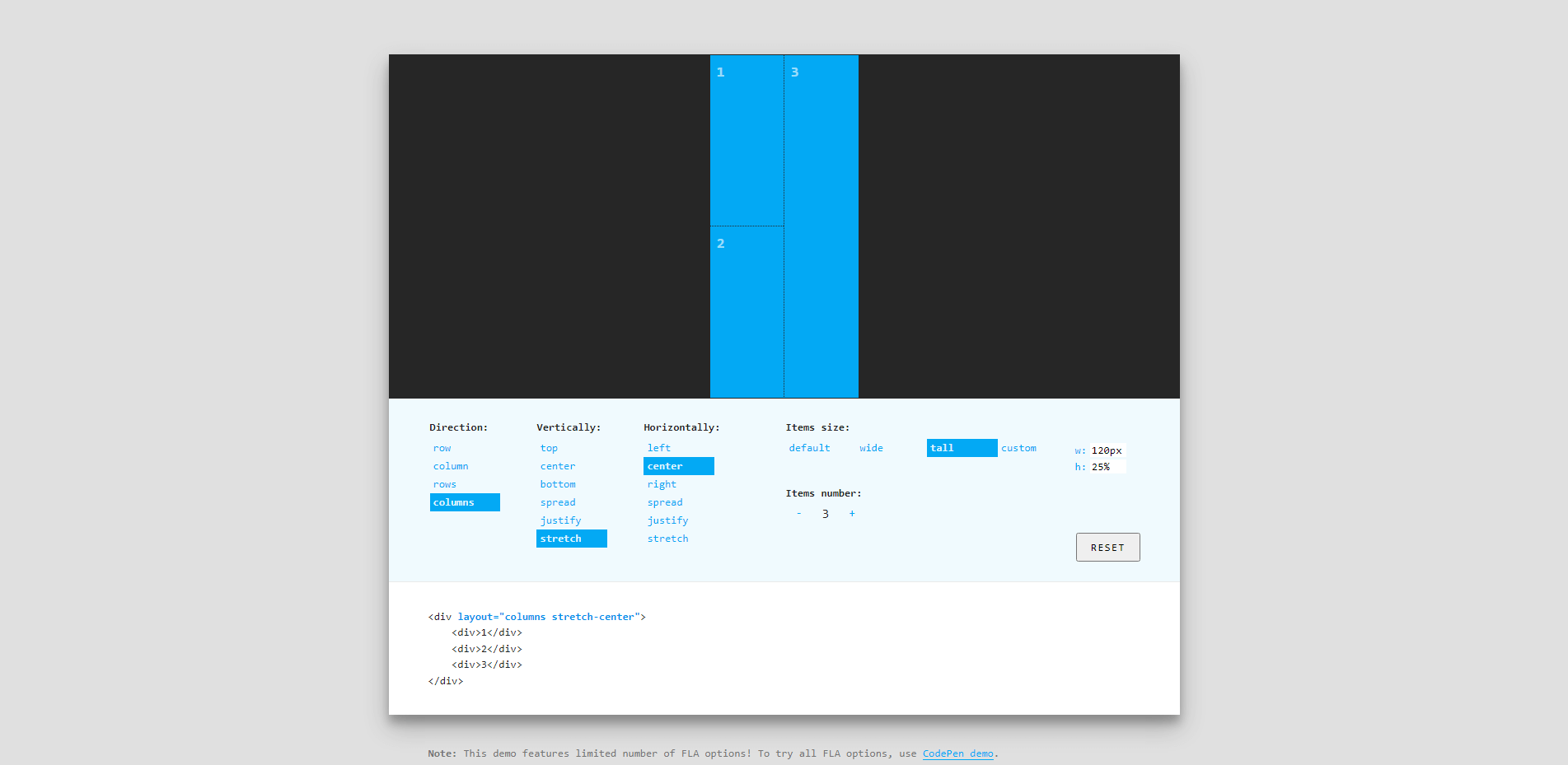
Flex Layout Attribute (FLA) works a bit like a framework. It is based on two unique shorthand properties: layout and self. With these two properties, you can bootstrap and then implement a custom layout on practically any page where you reference the FLA library.
And to avoid any confusion, you can use the generator (link below) to customize the layout to your requirements. Once done, you get a pre-rendered snippet ready for importing.
Flexbox Patterns
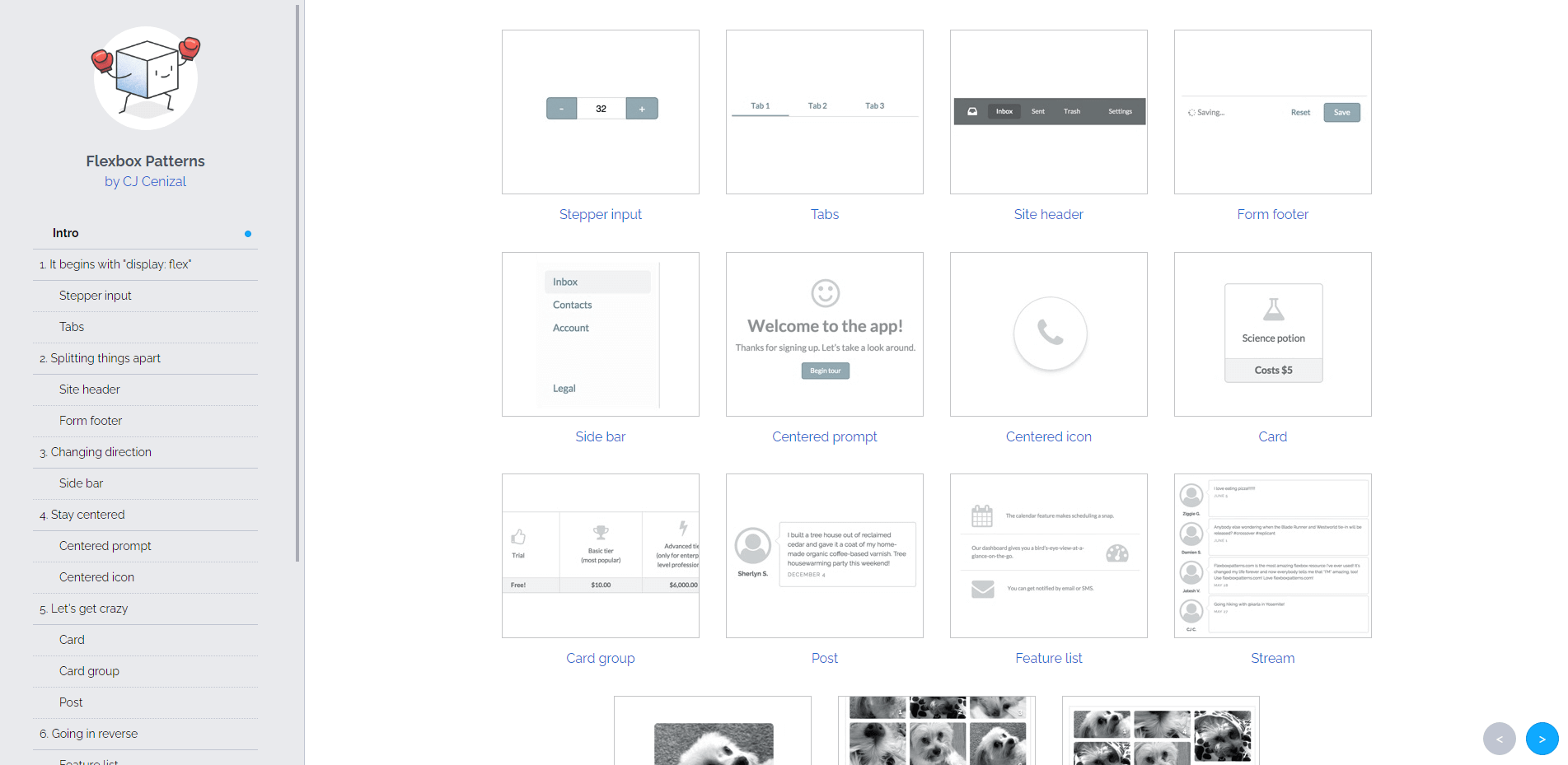
As I said at the beginning of this article – I’m also including a few “static” resources, and we are going to kick things off with Flexbox Patterns. This free resource from CJ Cenizal is focused on User Interface patterns that you can copy & paste into an existing layout structure.
Since we’ve looked at so many great generators already, combining your generated layouts together with these patterns will make for effortless design outcomes. What I love the most about this project though is that CJ has added a great deal of commentary for each pattern.
As such, you can also use Flexbox Patterns for learning more about how the Flexbox layout works.
1-Line Layouts
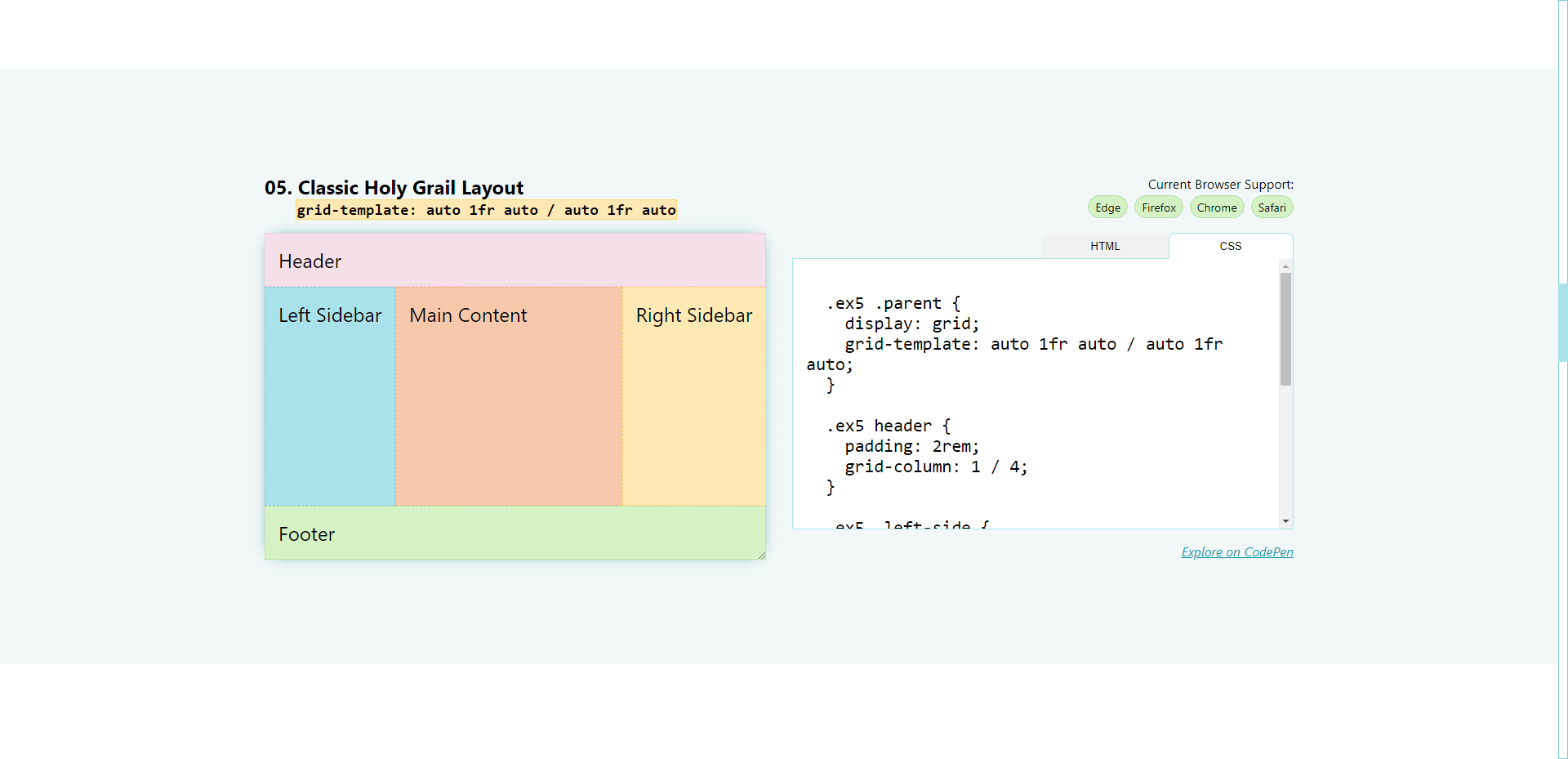
Una is an absolute legend in the CSS space. And for the 1-Line Layouts project; she put together a bunch of CSS layout structures that you can implement in any pre-existing project.
These layouts in particular implement some newer CSS features such as clamp(), but also showcase practical Flex and Grid “holy grail” layouts.
And if you want to learn more, check out this narrated video that goes into each layout in-depth:
The links below go out to the actual website where you can grab each snippet, but also Una’s personal GitHub page. She’s got plenty of wonderful projects going on, so worth checking out!
CSS Layout
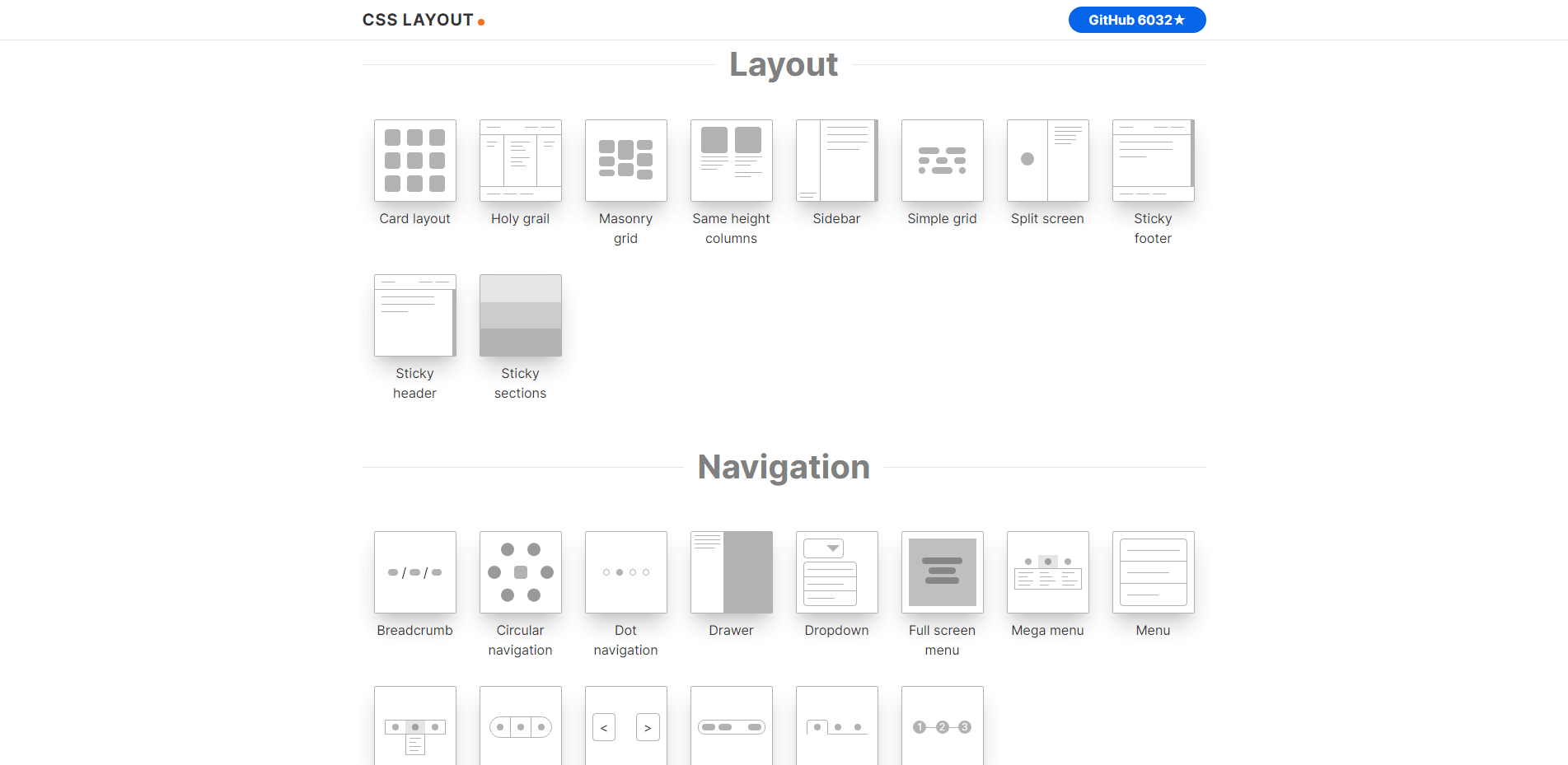
CSS Layout is a community-driven project that covers the most popular types of UI patterns that you can find in modern web designs. The patterns found in this resource are all written in pure CSS and don’t depend on any external libraries or scripts.
If you click on any of the patterns – you’ll get a code snippet ready to go. The nice thing about CSS Layout is that you get so many different elements, it’s actually super simple to quickly mix and match a unique design. And, of course, to learn more about CSS properties and features.
The best way to learn is to practice
It’s quite easy to feel overwhelmed with CSS. The smallest of mistakes can mean your layout simply won’t work, or it will only work on a specific device. So, at the end of the day, to get the most out of CSS – practice is essential.
And with the help of these layout generators and various patterns, it should be plenty to get you started. In my experience, learning to write raw CSS actually makes it more enjoyable to work with external libraries and frameworks.
I’m also going to try and keep this collection updated as frequently as possible. Now that features like Container Queries, Cascade Layers, and Variables are trickling into the mainstream, I think we’ll see plenty of changes to these tools in the coming year or so.
